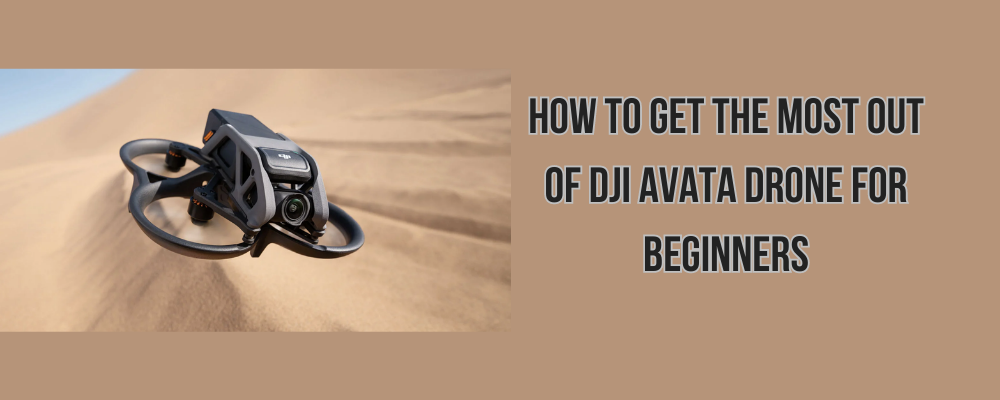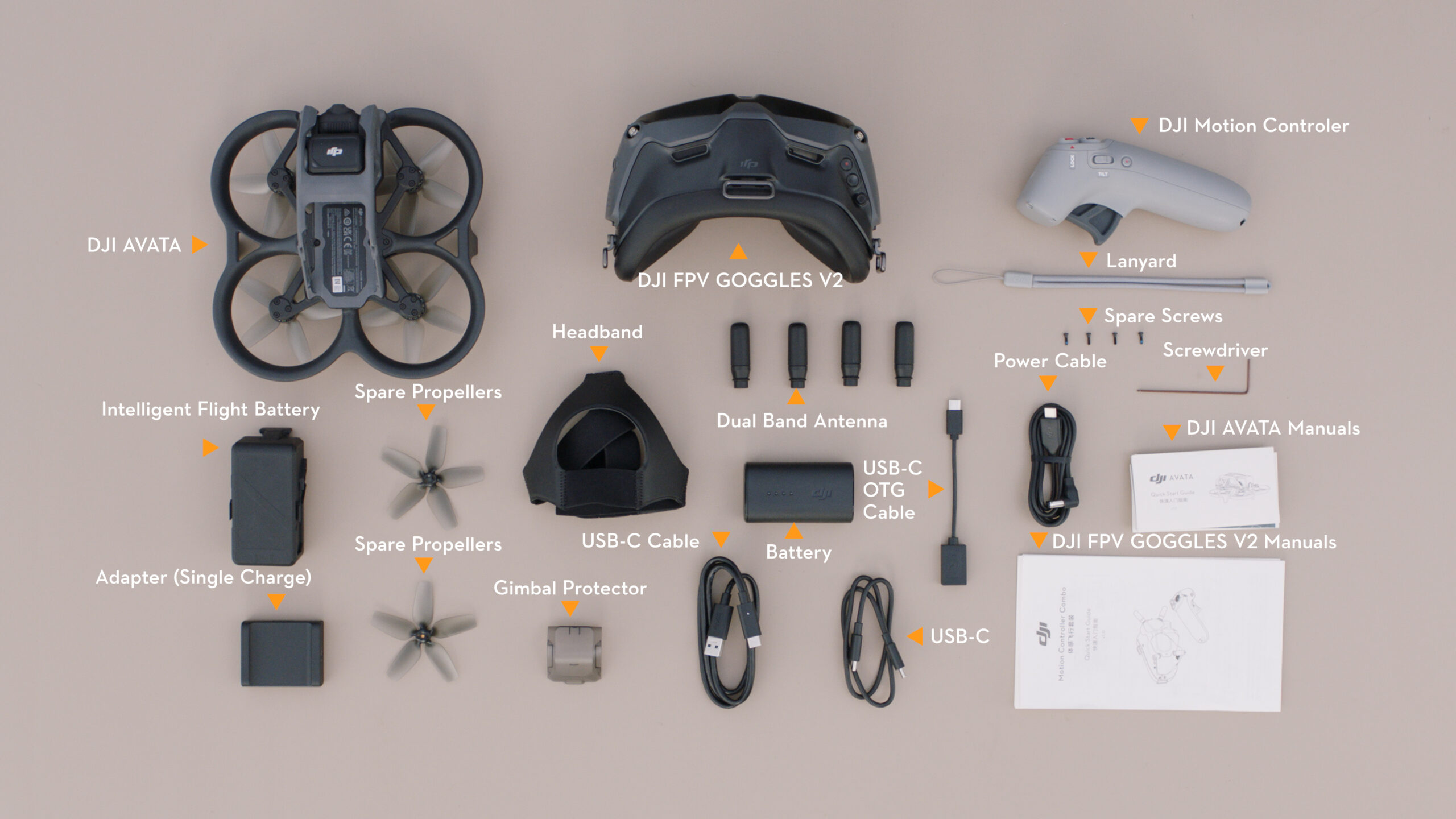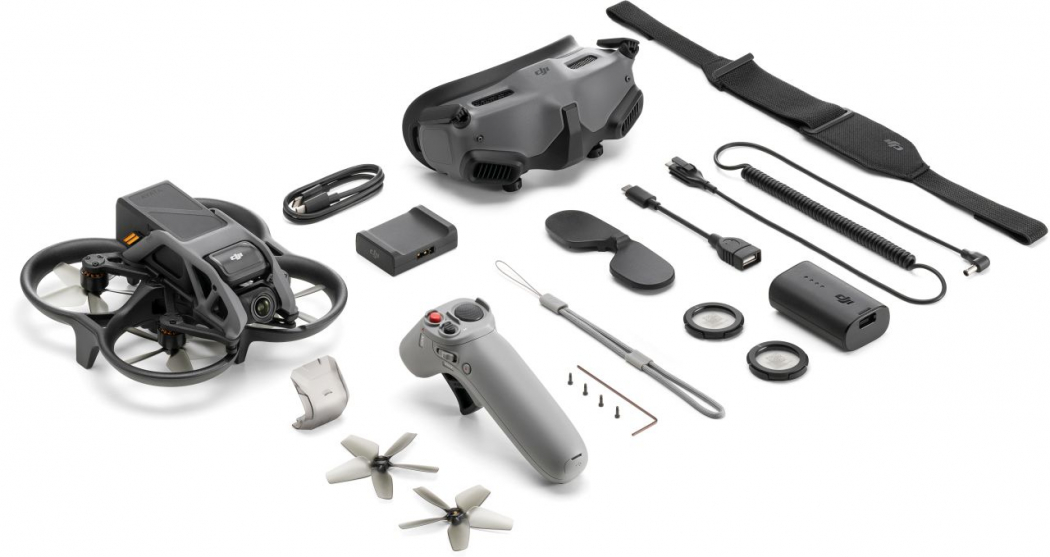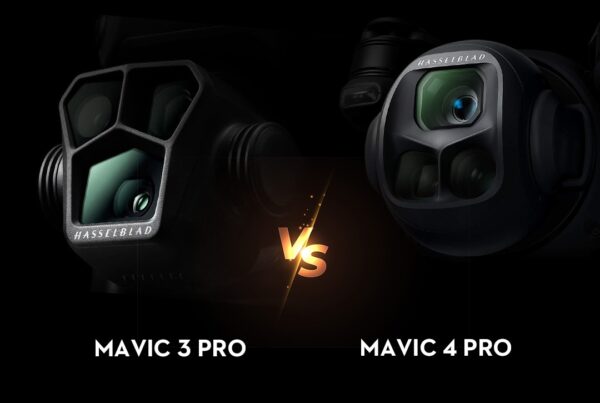
Introduction
- A brief overview of DJI Avata drone
- Why it’s a popular choice for beginners
- What readers can expect to learn from the blog
Pre-flight preparations
- Unboxing and assembly of the drone
- Charging the battery and remote controller
- Updating firmware and software
- Registering the drone with authorities (if required)
- Choosing a suitable flying location
Basic flying techniques
- Understanding the remote controller and its functions
- Takeoff and landing procedures
- Hovering in place
- Basic maneuvers such as forward/backward left/right, and rotation
- Using the drone’s camera and gimbal to capture footage
Advanced flying techniques
- Using intelligent flight modes like ActiveTrack, Waypoints, and Point of Interest
- Understanding and using the obstacle avoidance system
- Flying in different modes (Sport, Tripod, etc.)
- Tips for flying in different weather conditions
Maintenance and Troubleshooting
- Regular maintenance and cleaning of the drone and its components
- Identifying and fixing common issues such as propeller damage or connectivity problems
- Storage and transportation tips to protect the drone
Conclusion
- Recap of key points covered in the blog
- Encouragement to practice and continue learning with the DJI Avata drone.
Introduction
The DJI Avata drone is a high-quality, lightweight drone that is popular among beginners and drone enthusiasts alike. It offers a range of features that make it an excellent choice for those looking to get started with drone flying.
One of the reasons the DJI drone is a popular choice for beginners is its ease of use. The drone is designed with user-friendly features that make it easy to operate, even for those who have never flown a drone before. Additionally, the DJI Avata drone is equipped with intelligent flight modes that help automate some of the more complex flying tasks.
In this blog, readers can expect to learn how to get the most out of their DJI Avata drone. The blog will cover pre-flight preparations, basic and advanced flying techniques, maintenance and troubleshooting tips, and more. By the end of the blog, readers will have a good understanding of how to use the DJI Avata drone to capture stunning aerial footage and improve their drone flying skills.

Pre-flight preparations
Before taking off with your DJI Avata drone, it’s important to properly prepare for the flight. In this section, we’ll cover the pre-flight preparations you need to make to ensure a safe and successful flight.
Unboxing and assembly of the drone:
- Start by unboxing your DJI Avata drone and inspecting all of its components. Read the user manual carefully and assemble the drone according to the instructions. Be sure to attach the propellers correctly, as an incorrect attachment can lead to unstable flights.
Charging the battery and remote controller:
- The DJI Avata drone comes with a battery and a remote controller. Make sure to charge both fully before taking off. It’s recommended to use the included charger for best results.
Updating firmware and software:
- Check for any available firmware and software updates for your DJI Avata drone. These updates often include important fixes and improvements to the drone’s performance and stability.
Registering the drone with authorities (if required):
- Some countries require you to register your drone with authorities before flying it. Check your local regulations and register your drone if necessary.
Choosing a suitable flying location:
- Select a safe and suitable location for flying your DJI Avata drone. Look for a wide, open area with minimal obstacles and avoid flying near airports or other restricted areas. Also, check the weather conditions before flying to avoid high winds or rain.
By following these pre-flight preparations, you can ensure a safe and enjoyable flight with your DJI Avata drone.

Basic flying techniques
Now that you have prepared your DJI Avata drone for flight, it’s time to learn some basic flying techniques. In this section, we’ll cover the essential skills you need to master to control your drone with ease.
Understanding the remote controller and its functions:
- The DJI Avata drone comes with a remote controller that is used to control the drone’s movement. Familiarize yourself with the controller and its various buttons, sticks, and switches. Be sure to understand the functions of each one before taking off.
Takeoff and landing procedures:
- To take off, press the takeoff button on the controller, or manually increase the throttle until the drone lifts off the ground. To land, slowly reduce the throttle until the drone touches down. Practice taking off and landing in a safe location until you are comfortable with the procedure.
Hovering in place:
- Hovering is an essential skill to master for stable aerial footage. To hover, use the controller sticks to adjust the drone’s altitude and position. Try to keep the drone as still as possible, using small adjustments to keep it in place.
Basic maneuvers such as forward/backward, left/right, and rotation:
- Once you’ve mastered hovering, you can start practicing basic maneuvers. Use the controller sticks to move the drone forward, backward, left, and right. You can also rotate the drone left or right by using the left or right stick.
Using the drone’s camera and gimbal to capture footage:
- The DJI Avata drone is equipped with a high-quality camera and gimbal system that allows you to capture stunning aerial footage. Practice adjusting the camera angle and gimbal position to get the shot you want. You can also use the intelligent flight modes to help capture footage automatically.
By mastering these basic flying techniques, you’ll be able to control your DJI Avata drone with confidence and capture stunning aerial footage.
Advanced flying techniques
Once you have mastered the basic flying techniques, you can start exploring more advanced features of the DJI Avata drone. In this section, we’ll cover some advanced flying techniques that can take your drone flying skills to the next level.
Using intelligent flight modes like ActiveTrack, Waypoints, and Point of Interest:
- The DJI Avata drone comes with a range of intelligent flight modes that automate some of the more complex flying tasks. ActiveTrack allows you to track and follow a subject, Waypoints lets you plan a flight path, and Point of Interest allows you to circle around a subject. Familiarize yourself with these modes and practice using them in a safe location.
Understanding and using the obstacle avoidance system:
- The DJI Avata drone is equipped with obstacle avoidance sensors that can detect and avoid obstacles in its path. Make sure to enable this feature and practice flying in obstacle-rich environments to get comfortable with the system.
Flying in different modes (Sport, Tripod, etc.):
- The DJI Avata drone offers different flight modes that cater to different flying styles. Sport mode allows for faster flying and more dynamic maneuvers, while Tripod mode slows down the drone for smoother shots. Experiment with different flight modes and find the one that best suits your needs.
Tips for flying in different weather conditions:
- Flying in different weather conditions can present different challenges. In high winds, for example, the drone may become unstable and difficult to control. Make sure to check the weather conditions before flying and adjust your flying style accordingly. For example, in high winds, you may want to fly closer to the ground to reduce the effects of wind.
By mastering these advanced flying techniques, you can take your drone flying skills to the next level and capture stunning footage in a variety of environments and conditions.
Conclusion
In this blog, we covered the key points that beginners need to know to get the most out of their DJI Avata drone. We started with pre-flight preparations, including unboxing and assembly, updating firmware, charging the battery, and choosing a suitable flying location. We then covered the basic flying techniques, including takeoff and landing procedures, hovering in place, basic maneuvers, and using the drone’s camera and gimbal.
In the advanced flying techniques section, we covered intelligent flight modes, obstacle avoidance, flying in different modes, and tips for flying in different weather conditions. These techniques can take your drone flying skills to the next level and help you capture stunning footage.
As a final note, we encourage you to practice and continue learning with your DJI Avata drone. Drone flying can be a fun and rewarding hobby, but it also requires practice and a willingness to learn. Take the time to familiarize yourself with your drone and experiment with different flying techniques to develop your skills. With practice and patience, you’ll be able to capture breathtaking aerial footage and take your drone flying to new heights!
Popular tags
DJI Avata drone price in India, DJI Avata drone review, DJI Avata drone how to use, DJI Avata drone user guide





